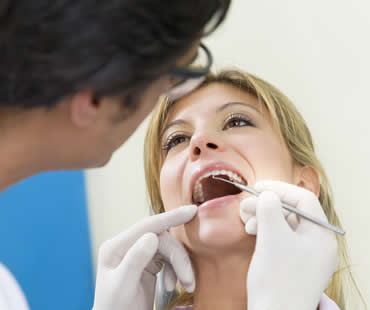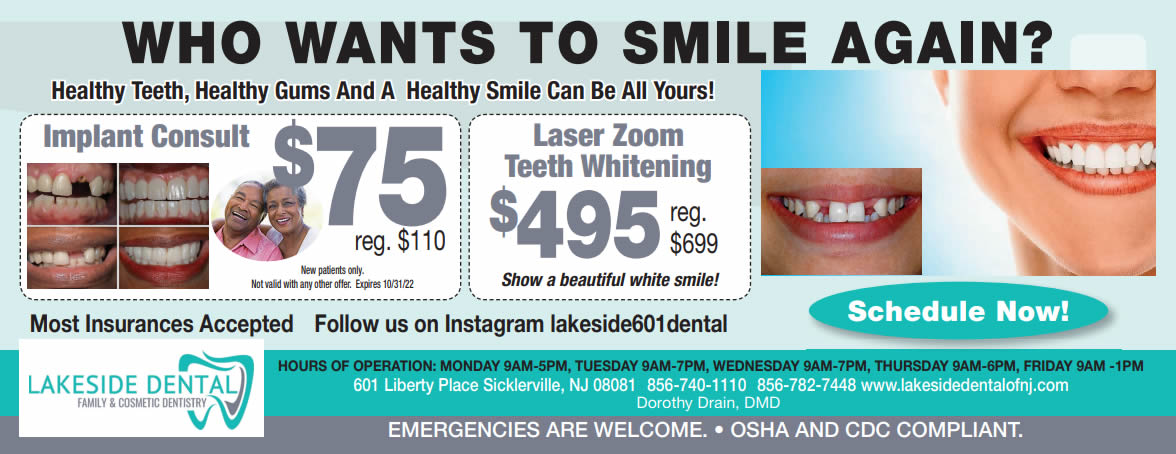
Did you know that it takes fewer muscles to smile than frown? This powerful tool often gets lost in the busyness of our lives. Not only is smiling easier on your face, but it can significantly improve your mood and give somebody else’s day a lift. The benefits of smiling include:
Connects you with other people
When you share a smile with another person, you form an instant bond. By boosting that individual’s mood, you can reduce stress levels and possibly encourage that person to try on a smile. Actually, you can use a smile as currency to successfully navigate awkward social situations and gather any assistance you need.
Changes your perspective
If you feel anger or stress, smiling can give your attitude a much-needed adjustment. Typically, smiling enables your body to release endorphins, wonderful chemicals that make you feel happy.
It doesn’t cost a thing
Often, we get busy and don’t have the time, energy, or resources to help others. Your smile brightens the lives of anyone who sees it and it only takes a minute or less.
Helps fight illness
People who smile a lot tend to be more optimistic, which can promote a stronger immune system and keep you healthy.
Why not smile?
Try to remember that if you don’t smile, your other options are frowning or wearing a blank expression across your face. Given those choices, smiling seems like the best alternative.
Boosts your confidence
When you smile, you often walk taller and carry yourself in a more self-assured manner.
Smile makeover dentist in Sicklerville

You may already know that consuming sugar brings health risks with it. It can contribute to obesity, diabetes, and heart disease, but it can also harm your teeth and gums. Even if you avoid desserts and sugary treats, you may be consuming more sugar than you realize. You should be aware that sugar is hidden in foods that you may not have considered.
Since the sweetened taste of sugar entices many people, manufacturers tend to add sugar to just about anything. Examples include crackers, condiments, salad dressing, peanut butter, yogurt, sauces, and protein bars. Manufacturers also list sugar on food labels under other names to trick people. Some alternate names for sugar are sucrose, dextrose, maltose, and molasses. Another hidden ingredient to avoid is high fructose corn syrup.
How can you avoid sugar if it’s lurking in the foods you enjoy? Here are some helpful hints in limiting your sugar intake:
- Eat whole food instead of processed food. Vegetables, fruits, and nuts are some other choices that will fill you up without the added sugar.
- Look for products that are sugarless or don’t have added sugars. Even foods labeled “low sugar” may contain more than you’d like.
- Drink sugarless beverages that won’t flood your mouth with sugar. Sodas, sweetened juices, and sweetened coffee provide lots of sugar and calories. Water is always an ideal choice to quench your thirst.
- Steer clear of artificial sweeteners, which don’t fill you up and leave you craving more sweets.
- Give yourself time to get used to having less sugar in your diet. Foods may taste less satisfying as you adjust, but you’ll get accustomed to the flavors that foods provide without the extra sweetness.
If you need a dentist in Sicklerville contact us today

Cleaning between your teeth and along your gums with dental floss is just as important as using your toothbrush. Although many people complain about flossing or completely avoid doing it, there should be no excuse for neglecting this part of your dental hygiene routine.
Flossing your teeth allows you to get rid of food particles and plaque that is caught between your teeth. It is able to reach areas that your toothbrush can’t. Therefore, flossing plays a key role in preventing tooth decay, gum disease, and bad breath.
You should floss your teeth at least once every day, using a gentle touch so you don’t damage your gums. You can use waxed or unwaxed dental floss, depending upon your preference and which one works best for you. Interdental cleaning aids like picks and sticks may also be carefully used, as well as floss holders. These tools are especially helpful for those with arthritis and vision problems.
Another item that may help remove trapped food debris is a water spray tool called an oral irrigator, although it shouldn’t replace flossing. The same is true for mouthwash, which may be used to help rinse away germs and temporarily freshen breath. You can add these items to your hygiene routine, but giving up flossing should not be an option. Using dental floss is the very best way to attack food particles and plaque so that you have the greatest chance for a healthy mouth.
Dr. Drain is a family and cosmetic dentist in Sicklerville

To improve the success of your dental implant surgery, there are a few guidelines you can follow during your recovery process. Diet is one of the most important factors to consider to ensure your implants heal properly.
Initially, you should not eat or drink hot foods for 24 hours after surgery as the heat could open the wound and cause an increase in bleeding. Avoid foods that may cause trauma to the gums or disrupt the implant, including the following:
- Hard foods such as candies, pretzels, nuts, and crunchy vegetables
- Chewy foods that require more than a couple of rounds of chewing such as rolls, gummies, hard fruit, and gum
- Foods that could stick in teeth or leave particles behind such as popcorn, seeds, and chips
- Foods or drinks that contain citric acid, such as oranges or grapefruit
Carbonated beverages
A soft diet is recommended for approximately two weeks after implant surgery to allow the gum tissue to heal. It is especially important to stay hydrated by drinking plenty of fluids, although you should strictly avoid the use of a straw for at least 48 hours post-surgery. Suggestions of ideal food and drinks after implant surgery would be:
- Cooked cereals such as cream of wheat or oatmeal
- Yogurt
- Scrambled eggs
- Cottage cheese
- Broth, bouillon, or soups
- Ground beef, baked or broiled fish, or baked or stewed chicken
- Macaroni and cheese
- Baked or mashed potatoes
- Soft bread
- Puddings, milkshakes or ice cream
- Water, milk, coffee or tea
Patients who maintain a healthy diet of soft foods feel better and heal faster after dental implant surgery. Following these guidelines will help to ensure the quickest and most successful recovery from your implant surgery.
Contact our Sicklerville dental office today to learn more about dental implants options.

Although your oral health is of utmost importance, it’s not the only thing to consider about your smile. There is a specialized field of dentistry that focuses on giving you the most appealing smile possible for you. Cosmetic dentistry can turn a crooked, discolored, or otherwise unattractive smile into one that you will want to show off.
A relatively new area of dentistry, cosmetic dentists are becoming more and more popular. The goal is to transform your smile into a beautiful one that will last for a lifetime. It is usually not difficult to find a cosmetic dentist by asking friends and family, researching on the internet, or asking your general dentist for suggestions for this type of specialist.
Most cosmetic dentists use the most modern technologies in their offices to provide the most advanced treatment options. Some of the most popular procedures that you can expect a cosmetic dentist to perform include:
- Teeth whitening – brightening the color of your teeth and minimizing stains
- Veneers – attaching porcelain shells to the fronts of your teeth to hide imperfections
- Implants and crowns – restoring missing teeth to improve mouth appearance and function
- Bonding – using composite resin material to repair chips and fill gaps
- Contouring – reshaping the tooth to create a more appealing look
- Braces – straightening your teeth and correcting jaw misalignment
In additional to improving smiles, you can usually expect a comfortable experience at your cosmetic dentist. A number of the common procedures are not painful, but those that do cause discomfort may be aided with sedation techniques. Sedation dentistry is also an option to relax patients who experience anxiety or fear about visiting the dentist. If you are unhappy with your smile, schedule an appointment with a cosmetic dentist to learn about ways to change your look.
Schedule a consultation today to learn more our Cosmetic Dentistry options at our Sicklerville dental office.

Brush and brush and brush, but you probably will not be able to get rid of all the plaque on your teeth. Even with regular brushing, some amount of plaque will build up on your teeth and turn into a hard substance called tartar. It simply can’t be removed without professional help.
What is tartar?
Tartar is a hard, yellow or brown deposit that forms on your teeth both above and below your gum line. Any food particles remaining in your mouth after eating will breed bacteria, which creates a thin film on your teeth called plaque. Any plaque that isn’t removed with brushing and flossing will harden to create tartar.
Is it harmful?
Tartar makes the surface of your teeth rough, which attracts food particles and therefore accelerates tartar formation. If you allow tartar to continue building up, your teeth will become discolored and your gums will be at risk. You will likely develop gingivitis, in which your gums become swollen and red. They will bleed easily and become painful, and eventually can lead to tooth loss. Advanced gum disease is even linked to higher risks of stroke, heart attack, and lung disease.
How is it removed?
Tartar is too hard and stubborn to be removed with regular brushing. The only effective way to eliminate tartar is by visiting your dentist and having it removed using professional equipment. This procedure is commonly called scaling.
Can I prevent tartar buildup?
Regular brushing at least twice daily with a fluoride toothpaste can help reduce tartar formation. Unfortunately, even with proper dental hygiene, plaque buildup is inevitable over time and will become tartar. Schedule regular checkups with your dentist to have professional cleanings performed.
We look forward to seeing you in our Sicklerville dental office












